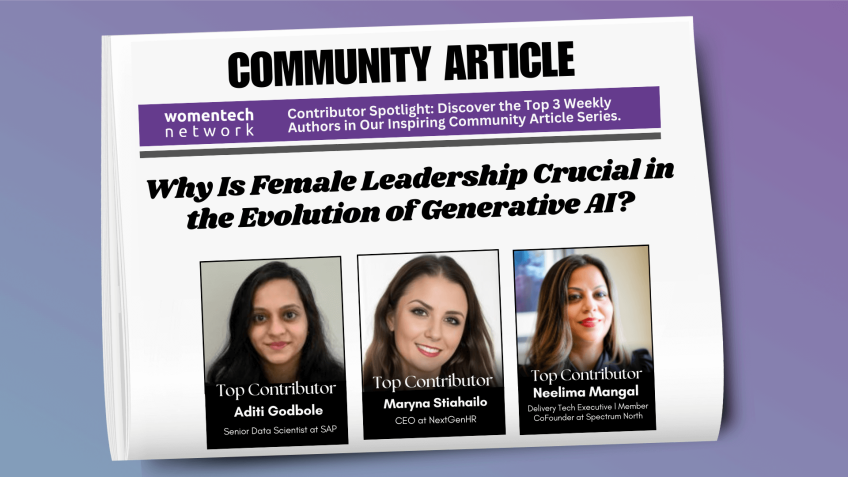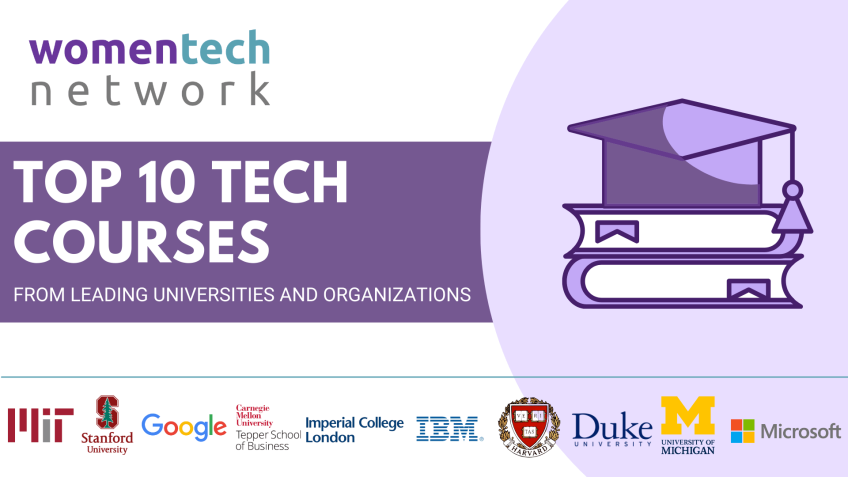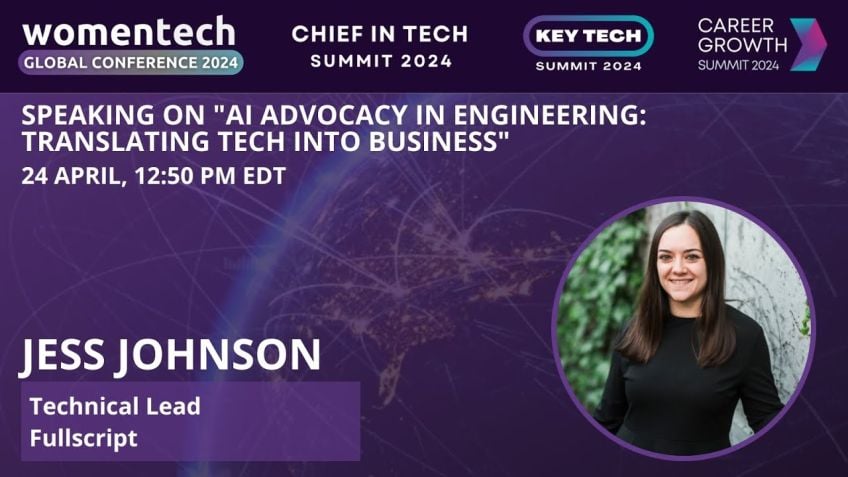Operationalizing AI at Scale by Sandra Bauer
Sandra Bauer
Partner AI & DataKetna Dhola
Senior Consultant AI & DataOperationalize AI at Scale: Empowering Diverse Teams
In today's ever-evolving tech sphere, two professionals from Deloitte, Sandra Bauer and Kitna Dola, share their insights on creating innovative solutions for businesses through operationalizing AI at scale.
Setting the Stage
With decades of experience in data science, AI, and analytics, Sandra Bauer and Kitna Dola are enthusiastic about harnessing the power of AI to bring transformative change on a global scale. Furthermore, this passion doesn't stop at tech trenches; both are ardent advocates for diversity, inclusion, and women empowerment in the tech arena, thereby contributing towards a more equitable world.
Operationalizing AI
Organizations today recognize the potential of AI; yet, several still struggle with fully implementing and benefiting from AI-driven solutions. One of the significant problems is the inability to effectively operationalize AI. This challenge stems from lack of proficiency, inadequate orchestration of projects, and a scarcity of TechOps culture. One solution lies in the implementation of an AI/ML operating model that ensures regular collaboration, improvement, and scalability of models within the organization.
Bridging the Gap with AI/ML Operations
Machine Learning Operations (MLOps), in essence, manages the lifecycle of machine learning projects. The process begins with defining a specific problem, collecting and verifying data, and building & training the model. This model finally gets deployed with its performance continuously monitored and optimized. Thus, MLOps automates the machine learning lifecycle, favoring faster market time, reduced model failure risk, and improved scalability. However, the success of MLOps necessarily requires strategic investments in data management, technology, and organizational enablement.
Essentials for Successful AI Implementation
- Integration and Scaling: Systems and workflows should be effectively integrated to scale up ML application.
- Centralized Approach: A centralized team managing ML projects ensures consistency and prevents duplication of efforts across the organization.
- Leveraging Diversity: A diverse team fosters innovation and effectiveness in creating AI solutions. A homogeneous team, on the other hand, may result in biased algorithms and exclusion of certain user groups.
Women in AI
Women's unique voices and perspectives bring valuable diversity and lesser bias into AI/ML teams and models. For instance, incorporating diversity into tech teams reduces the risk of overlooking needs of diverse users, as happened with Apple Health App's initial lack of a menstrual tracking feature.
Historically, women have been pioneers in tech too, and their roles and achievements deserve recognition. As Deloitte's study reveals, diversity in tech teams enhances trustworthiness of AI models, accelerates business advantage, and ensures less-biased results.
Final Thoughts: Navigating Questions and Challenges
Operationalizing AI at scale necessarily involves addressing numerous challenges, from finalizing project timelines to setting success metrics, reiterating here the significant role diversity plays in all these areas. As such, answer to most challenges lies in adopting diverse perspectives, re-evaluating models, facilitating collaboration, and ensuring constant feedback.
However, the learning and enhancements don't stop with project completion. Constant reevaluation and tuning of models are essential to ensure AI's benefits persist over time and across diverse situations.
Video Transcription
Perfect. Perfect. Well, welcome everybody to our session today. My name is Sandra Bauer. I'm partner with Deloitte. And me and Kitna are talking about operationalize A I at scale today to you. Um We're very excited to be here.So um let's see what the session can bring to you. Kna Yeah. Yeah. Yeah. Go ahead.
Uh Good morning. Uh Everyone. Uh First of all, I'm honored to be here today to share my experiences and insights with you. My name is Kitna Dola and I'm from India and currently based in Frankfurt, Germany. I'm part of a IND team at Deloitte Consulting. Um I have over six years of experience in the field of data science and A I. And my experience includes actively supporting in developing big data and analytics landscape in by combining technologies, concepts and statistics to create innovative solutions that then evolved from prototype to scalable enterprise wide solution. And aside from my technical skills, I'm also a women tech global ambassador with women tech network. And I deeply um I'm passionate about making meaningful impact uh in the advancing women's empowerment. And I believe that diversity, diversity and inclusivity are um essential for creating a better workplace and eventually a better world. So, um and I'm committed to my part to help as you that girl and really excited to be here today and looking forward to connect with the incredible women around the globe.
I speak
to you Sandra now. Yeah. Um As I said, I'm partner with Deloitte. Um I've been in the analytics space for over 23 years. I started my career as a consultant like KNA and I um always have been passionate about analytics. Um Recently I started to increase uh my settings into the cloud. Uh I'm the A I ambassador for Germany uh for our company. So I'm really, really excited about the topic today. Now, if you, if you move forward, we brought to you um a couple of uh topics together that probably gonna be of interest to you. What is um A I opera operationalization uh When I started with Deloitte, um we actually embraced the fact that we can load data sets into an A platform and actually use A I on top of it. Uh It evolved over time, of course, and some of the topics that the clients have in our environment are still the same as a couple of years back. So we want to talk a little about how to actually operationalize it. We're going to go into the topic of the I MLS. That's how you set it up from a structural perspective, a team perspective a skills perspective, but also from a platform perspective. And we closed uh this thing with women in the eye.
As I said, I'm the I ambassador for, for Germany. And I'm really excited to help women advance in, in her care, in their careers within our organization and outside of our organization. If you move on ket. Now, what is A I station? Um during my career, I um used a lot of implementations not only from an analytics perspective, but also from a platform perspective. And we always come from strategy to setting up the use cases, putting them on a road map, implementing the platform that is capable of doing those use cases and also operationalize it. Um We have yet to find a really big company that actually has the full potential out of A I. And we just brought a couple of facts from the Harvard Business Review of last year uh October 22. So everybody's invested in A I. It's a huge topic right now, especially with self driving cars, for example, and all um all the organizations that are actually investing building up their teams. And uh for the yeah, 74% of organizations appointed chief data are chief and Electric Lytic Offices which are usually the people that I'm talking to on on top level. But and here comes the, but we do struggle with uh getting those things into production.
So most of the time people experimenting with generative A I right now the same thing. But what do you actually do as an organization to have the right boundaries, to put those use cases that are really valuable for our organization into production. Next slide. Yeah, so we see a lot of key challenges. The scalability, the knowledge gap is a big one. I mean, we're scaling up our folks with trainings on all the technologies and technology is ever evolving when I started uh in the big data space and cloud space. Um the services available Google cloud, for example, was like 80 services. Now they over double that amount of services available and they have a IML models prebuilt into the applications. So there's a huge gap in the skill sets but also the maintenance of those projects and the maintenance of the models needs to be orchestrated right from the start. Otherwise you end up with P solutions which we call them and um the uncertainty in ML projects. So somebody has to wear the hat. Of course, if you have a chief data officer, that's usually the person, but the organization also has to embrace it and meaning embracing it, you have to build up the de ops culture. So our recommendations are re evaluate the models, build up an ML pro practice and actually put that in place in in your organization and able the collaboration because you have to actually look into those details and you have the teams collaborating constantly and getting into feedback loops to actually the mo make the models better and train them better um build up cloud platform these days.
Of course. So you can actually use that as your data science platform and combine those data sets that are usually uh distributed within your organization and reorganize your whole team around A I operating model, which goes very well with the way that you set up the teams and I uh with that.
OK. Now,
yeah, thanks uh Sandra. Uh So to actually uh put it into the production, we uh have to have um A I MLS uh within our organizations. So to begin with, uh let's see, uh what machine learning corporation is all about. So it's a set of practices that help managing the entire life cycle of machine learning projects. Uh But why do we use it? Uh Imagine that you are building a machine learning model to predict if a customer will purchase a product or not. Now, you start by collecting the data, you build and train your model and finally you deploy it to make the predictions. But uh it is building is uh building. The model is just one aspect of it. You also need to scale it, monitor it and update it over time so that it can be utilized by the business process. And this is where MLS come in, comes in. And the process is basically divided into four main steps starting with the problem this is uh where uh we define the problem and it can be anything of improving cups customer management or, you know, uh to optimizing supply chain operations. And once the problem is identified, the next step is data within weeks, we collect the data and preprocess it and ensure that its quality and a accuracy uh is intact.
So that um because the quality and accuracy of the data will directly impact the accuracy and effectiveness of our of our mode. And with the data prepared, the next step is then to build and train the model. This is the step where data scientists um uh experiment with different machine learning algorithms uh track the performance of different models and optimize hyper parameters uh to ensure that the best model is selected. And finally, we come to the last step of the process which is operationalization in this step. Um The model is trained deployed into the production environment and its performance is monitored and optimized continuously to ensure that the model remains accurate and up to up to date over time.
So, in conclusion, by streamlining machine learning um uh operations, uh uh it kind of helps us in automating the machine learning life cycle end to end. And businesses can benefit um in a number of ways such as, you know, fast time to market, reduced risk of model failure and improved scalability. And this way, they can also ensure that OK, they are getting the most out of their machine learning investments now. Um But to make sure the successful implementation of ML OPS organization must also develop certain capabilities. And these capabilities can be divided into two categories of technical and organizational enablement under technical. Uh There are two key areas uh data management uh which involves um collecting, storing, processing, and managing the large volumes of data. And the second one is uh focused on technology which entails selecting and deploying the right tools, technologies to support mvelo uh processes.
On the other hand, or organization enablement is all about maintaining the organizational culture which targets on creating the culture of um calibration, um experimentation and continuous learning. And uh the second key area is organization itself which focuses on organizational structures, processes and roles which can support the uh implementation of envelopes. Now, uh let's let's talk briefly about what skill set should we be building in order to have a successful implementation of A I or ML solutions. So, there are three key aspects that we must focus on. Firstly, um focusing on integration and scaling are really critical to build any A I solution. We must ensure that uh machine learning is integrated into their existing systems and workflows to scale up the use of um uh ML and create value for business. Secondly, taking the centralized approach, this means creating a centralized team which is responsible for managing machine learning projects and ensuring consistency across the organization by doing so one can avoid um duplicating uh silos duplication of efforts and ensure that everyone is working towards the same goal.
And finally, leveraging the diverse team is really, really important. Um This means that uh when building uh A I Solutions, uh we should have a diverse range of skills and backgrounds uh which will ensure that the solution that we create are innovative and effective. And here, I would also like to give one example of uh Apple Health App. Uh So in its previous earlier versions, the app did not include the ability for users to track their menstrual cycle despite having all the other features such as exercise, sleep, nutrition, everything. And this caused a significant backlash from users. And it eventually added the feature uh in its later versions. But the example shows that it is really important to have a diverse team and perspectives while building any solution because if not, then it can blend, uh it can lead to biased algorithms and exclusion of certain user groups. And it's really crucial that we prioritize diversity in every step of the A I development process to build solutions that benefit everyone. And um yeah, with that, I would again like to hand over to Sandra who will deeper into women in E I topic. So stay to you,
Sandra. Thanks Katla. Yeah, and kidnap just pointed out um There is a real uh advantage if you incorporate diverse teams into your setups. So um we've seen this in our practice and I just brought you one of the quotes um being a woman and a team of all men means you are going to have a unique voice. And it is important to embrace that. And I usually say I'm the unicorn of the unicorns of the unicorns because I'm a woman. I'm in tech, I'm leading a cloud enabled uh analytics practice and I work a lot with Google and that's very something that you have to embrace. If you have the knowledge and you have the courage to actually speak up, the voices need to be heard. And this is something that we foster in our organization, we foster it at our clients. That's why clients come to us to actually embrace that diversity in the teams that we bring to the table. And it also helps us accelerate in building A I models that are less biased because um you all heard that in the news, whatever you train the model with, uh it actually comes with the results.
So the better you train your model and the more diverse the team is that's actually working on it. And that has been proven over time all the time. Uh The better your results will be. If you move to the next slide, we got a little bit of history and I was um the last couple of days, I'm, I'm quite often at, at Google and they haven't at a, in a loveless, um, room actually. And I had to look it up because I'm like, who was she? And it's actually amazing that at the time when she was around, which was in the 18 hundreds, she already thought about automating, um, numbers in, into, um, coming up with solutions for whatever she worked on. So it's, it's a huge long history of women that are actually worked in the tech space, which we usually forget because it's all about the man inventing, you know, telephone and uh flying around the world. But there is equally women who flew around the world and actually pair pioneer to tech themselves. And I'm not gonna read through the whole slide, but I'm very interested in building up role models, not only in our organization, but also standing as a role model to, to women that come into the workforce, right from university.
And I studied engineering and that was one of the views that actually um started there and also kept staying in that field. And I think it's very important that you talk about your achievements and you talk about what needs to change going forward in our society to embrace that we have a diverse society with all facets that it comes with. And um if you go to the next slide, this is definitely something that's close to my heart. So um diversity matters and we are Deloitte um see the value and we actually did a study that shows those results. So the respondents come up with 71% said that adding women to an A I machine learning team will bring a unique perspective. Uh 66% I said that it's really beneficial to have a more diverse employee workforce working on topics that you actually bring to the table. And 63% say that machine A I machine learning models would always produce biased results if they're not trained properly. And that's something that you have to keep in mind if, if you're working in this field, because most of the time the data sets are pre qualified by somebody.
So you have to make sure that you check the data sets that your models are trained on and that you actually look into whatever, whatever there there is uh to actually make them better. It's all about trustworthiness also. So you have to also embrace the boundaries that you want to work with. But uh training your models and training uh your teams on being a little bit more open minded in what they do. It's one of the key differentiators that we can have in the market. And with that, my alarm just went off. So um if you have any questions, we're happy to answer. Yeah, I'm just reading through what, what one posted. If the data mostly comes from a audience who do you train diversity in? Mm Models a very, very good question. Um You know, data itself is, is, is not biased. But the way you actually use the data and the way you're actually putting into the model, that's, that's what your outcome is based off of. So what I usually tell my team is like, try to find as much as possible out of what you actually have at uh available, but also be creative in uh finding outside sources. There's lots of things available outside that you can actually leverage and models do do tend to be able to use a certain diverse uh data sets. And that's one of the things that we actually encourage our teams to do.
I'm just reading through the notes, maybe can now you can take the Sarah one. Mhm Yeah, I also um I think this,
this uh question is really interesting and you can answer it better um regarding the challenges uh uh f metrics and uh you know, since you have it uh too much of experience and you can share it probably have you take a look
sometimes. Yeah. Yeah. Um I mean, there's different uh key uh indicators that you can use for a successful modeling. Um It always is based on what you wanna achieve, of course. Um And also the, the thing with, with models is usually you have to fail uh quite a lot of times before it's like perfect and you can put it in production. So um some of the things that we came up with is like fail fast approaches into our teams. And then um after a certain point where we set the threshold, we can actually then um use it in production. I think it's very unique to whatever you're doing. Um And I usually use the quite interesting um to me, at least quite interesting because I drive fast on determined autobahns. Um I wanna have my model that drives self drives my car in the future will be 99.9% accurate, especially if you're driving really fast. So I think based on the use case that you're actually looking into for, for a IML models, you have to have certain thresholds, but that's very unique to the situation you're working on. Mhm.
And I see ma many more uh question as well. Um And one of the questions, so how do you define the timeline allocated for defining the problem
initially? So it depends really on the questions that it needs to be
asked if it's really, you know, uh something uh customer oriented or the problem is.







